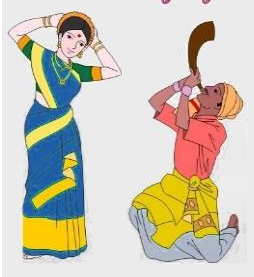Tuesday, February 9, 2016 | 12:07:00 PM
Bihu

Bihu denotes a set of three different cultural festivals of Assam and celebrated by the Assamese around the world. Bihu is also used to imply Bihu dance and Bihu folk songs. The Rongali Bihu or the Bohag Bihu is an important festival of Assam. The most important festivals of Assam are the Bihus, celebrated with fun in abundance by all Assamese people irrespective of caste, creed, and belief.
Bohag Bihu:
Bohag Bihu is the most popular Bihu which is celebrated in mid April.Its also the start of the Assammese New Year and the spring season. The farmers prepare the fields for cultivation and there is a feeling of joy around. The women make pitha, larus (traditional food made of rice and coconut) and Jolpan which gives the real essence of the season. The first day of the bihu is called goru bihu or cow bihu, where the cows are washed and worshipped, which falls on the last day of the previous year, usually on April 14. This is followed by manuh (human) bihu on April 15, the New Year Day. This is the day of getting cleaned up, wearing new cloths and celebrating and getting ready for the new year. The third day is Gosai (Gods) bihu; statues of Gods, worshiped in all households are cleaned and worshiped asking for a smooth new year. The folk songs associated with the Bohag Bihu are called Bihugeets or Bihu songs. Bohag Bihu or Rongali Bihu festival continues for seven days and called as Xaat Bihu. The seven days are known as Chot Bihu, Goru Bihu, Manuh Bihu, Kutum Bihu, Senehi Bihu, Mela Bihu and Chera Bihu. it's also called Catty...

Kongali Bihu
Kongali Bihu (mid-October, also called Kati-Bihu) has a different flavor as there is less merriment and the atmosphere has a sense of constrain and solemnity. During this time of the year, the paddy in the fields are in the growing stage and the granaries of the farmers are almost empty. On this day, earthen lamps (saki) are lit at the foot of the household tulsi plant.To protect the maturing paddy, cultivators whirl a piece of bamboo and recite rowa-khowa chants and spells to ward off pests and the evil eye. During the evening, cattle are fed specially made rice items called pitha. The Bodo people light lamps at the foot of the siju tree.
Bhogali Bihu
Bhogali Bihu (mid-January, also called Magh Bihu) comes from the word Bhog that is eating and enjoyment. It is a harvest festival and marks the end of harvesting season. Since the granaries are full, there is a lot of feasting and eating during this period. On the eve of the day called uruka, i.e., the last day of pausa, menfolk, more particularly young men go to the field, preferably near a river, build a makeshift cottage called Bhelaghar with the hay of the harvest fields and the bonfire or Meji, the most important thing for the night. During the night, they prepare food and there is community feasting everywhere. There is also exchange of sweets and greetings at this time. The entire night (called Uruka) is spent around a Meji with people singing bihu songs, beating dhol a typical kind of drums or playing games. Boys roam about in the dark stealing firewood and vegetables for fun. The next morning they take a bath and burn the main Meji.
This Bihu send ecard and invitation through www.desievite.com
Posted By Beena


